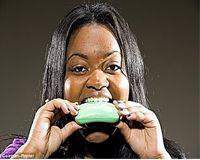

For instance, you should discuss appropriate and inappropriate food substances and may need to restrict access to cabinets with childproof locks. Your child’s doctor may also refer you to a mental health specialist and will work with you to help prevent and manage pica. The behavior is inappropriate for your child’s age or developmental stage (he or she is older than 18 to 24 months).ĭuring an evaluation, the doctor will likely conduct a physical examination, run blood tests to check for anemia and other nutritional deficiencies, and screen for lead and other toxic substances.The behavior is persistent and lasts longer than one month.Your child regularly consumes non-food materials, even when you try to restrict access to them.The following signs can help you determine if a doctor’s appointment is warranted: For these reasons, it’s important to contact your child’s physician if you think he or she has pica. If your child consumes items such as paint chips that contain lead or other toxic chemicals, he or she may be at higher risk for poisoning and brain damage.

Infection from bacteria, parasites, or other microbes in dirt.Pica can have dangerous complications, including: It appears to have a behavioral basis, although some children may eat dirt or other substances because they are deficient in certain nutrients, such as iron or zinc. Some, but not all, kids with it also have another condition, such as: The behavior must persist for at least one month to be categorized as the disorder. Simply sampling paste once during a kindergarten art class doesn’t mean your child has pica. (The word is derived from the Latin for “magpie”-a bird with a large and indiscriminate appetite.) A child may eat dirt (a subset of pica known as geophagy), as well as substances such as: By definition, pica involves the regular consumption of anything that isn’t a food or beverage.


 0 kommentar(er)
0 kommentar(er)
